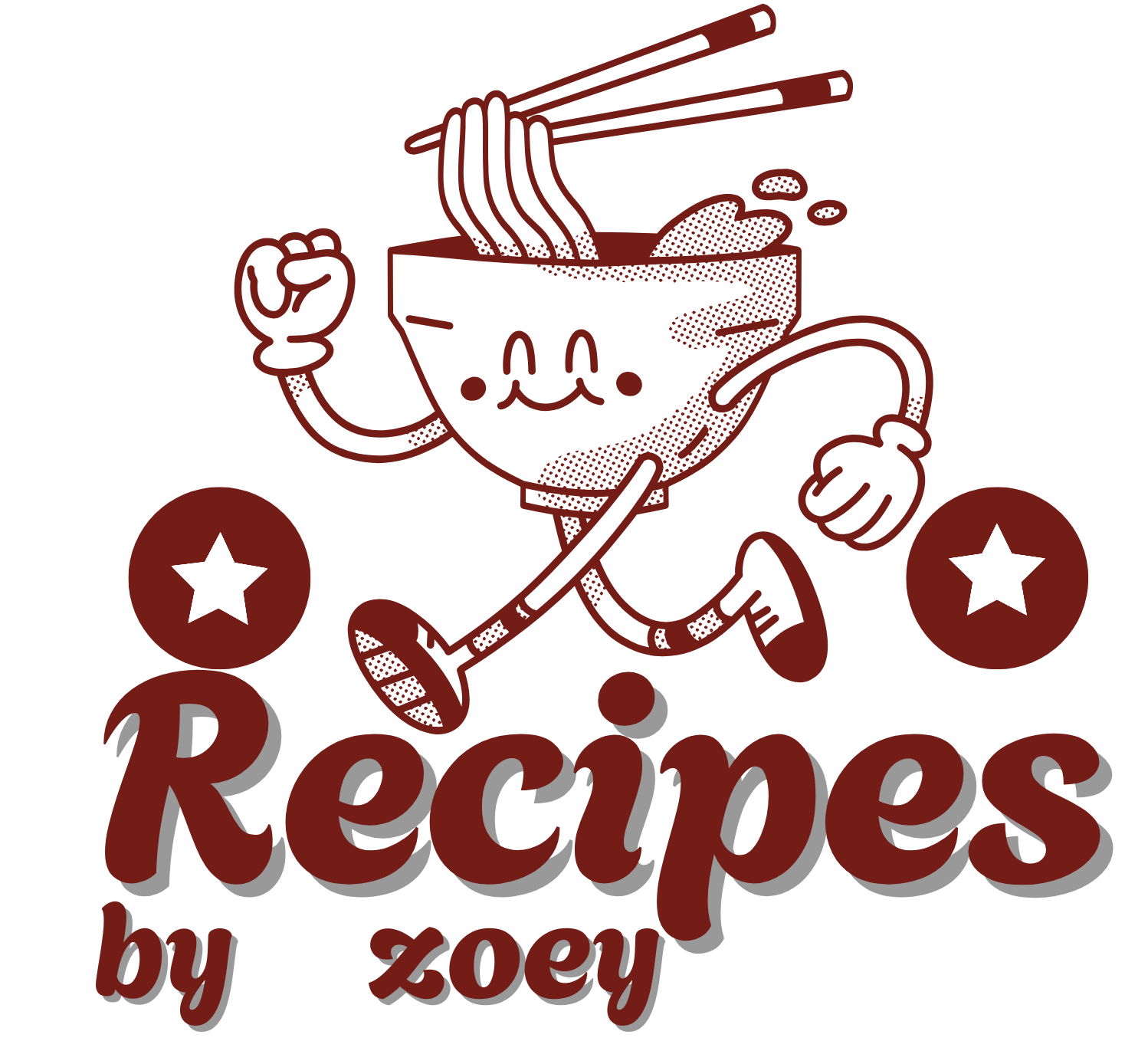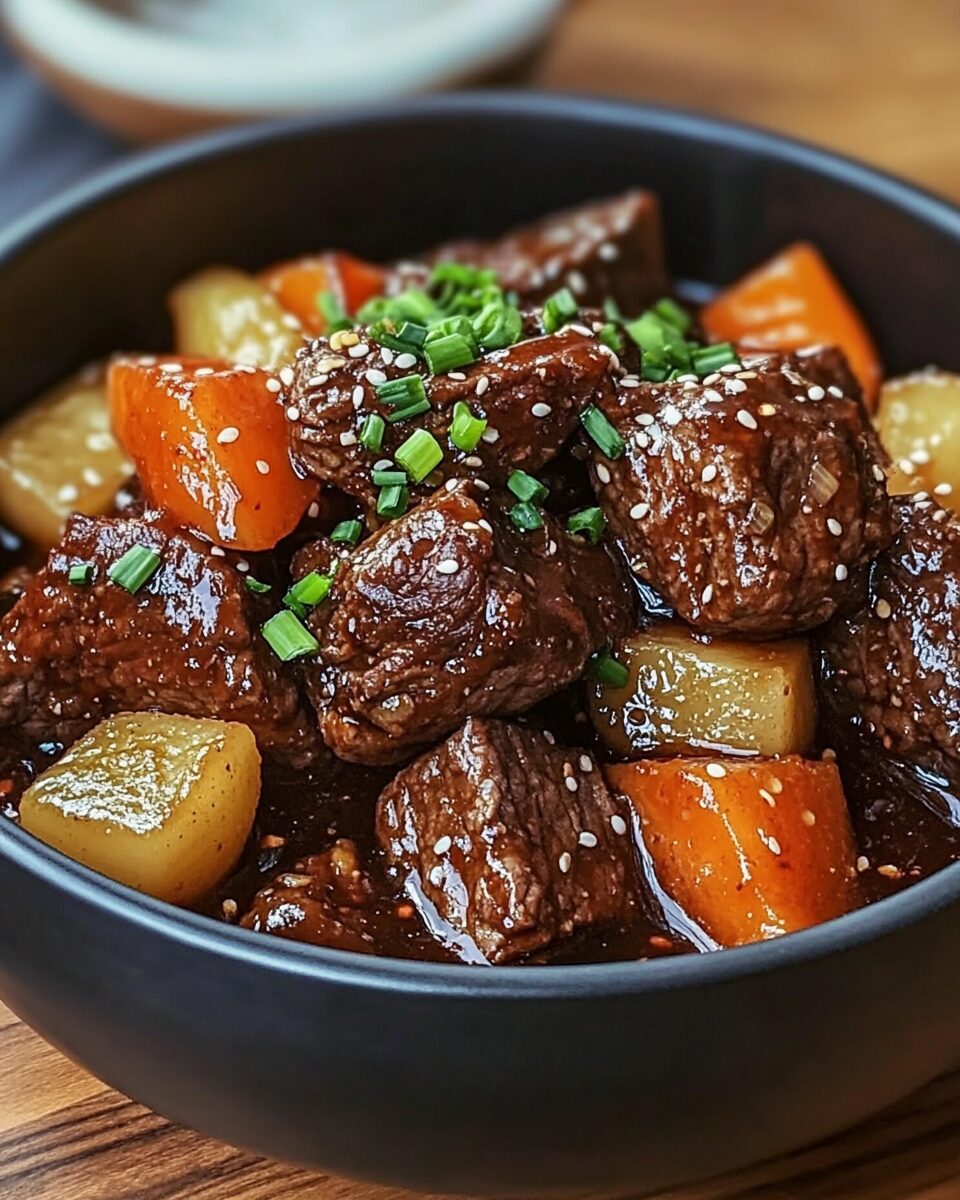Korean-Style Pot Roast is a flavorful fusion dish that elevates the classic comfort food with bold Korean ingredients like gochujang, sesame oil, garlic, and grated Korean pear. The chuck roast becomes melt-in-your-mouth tender as it slow cooks in a savory-sweet soy-based sauce, surrounded by hearty vegetables. This dish is perfect for cozy weeknights or impressive dinner parties, offering a taste of Korean flair in a homey, satisfying meal.
Full Recipe:
Ingredients
For the Beef:
-
3–4 lbs chuck roast
-
Salt and black pepper, to taste
For the Sauce:
-
½ cup soy sauce
-
2 tbsp gochujang (Korean chili paste)
-
3 tbsp sesame oil
-
3 cloves garlic, minced
-
1-inch piece ginger, grated
-
2 tbsp honey or brown sugar
-
½ cup grated Korean pear (or apple)
-
1 tbsp rice vinegar
Vegetables:
-
3 carrots, peeled and cut into chunks
-
2 potatoes, peeled and quartered
-
1 onion, sliced
-
(Optional) 1 Korean radish, sliced
Garnish:
-
Sliced green onions
-
Sesame seeds
Directions
Step 1: Prepare the Beef
Pat the beef dry and season generously with salt and pepper. In a skillet over medium-high heat, sear the beef on all sides in sesame oil until browned.
Step 2: Make the Sauce
In a bowl, combine soy sauce, gochujang, sesame oil, garlic, ginger, honey, grated pear, and rice vinegar. Stir until smooth.
Step 3: Assemble and Cook
Place the seared beef in a slow cooker, Dutch oven, or heavy pot. Pour the sauce over the beef. Arrange onions, carrots, potatoes, and Korean radish around the meat.
-
Slow Cooker: Cook on low for 8 hours or high for 4–5 hours.
-
Stovetop: Simmer on low for 3–4 hours, covered, checking occasionally.
Step 4: Serve
Transfer the beef to a platter with the vegetables. Spoon sauce over the top. Garnish with green onions and sesame seeds.
Nutrients (Per Serving, Approximate)
-
Calories: 425 kcal
-
Protein: ~38g
-
Fat: ~24g
-
Saturated Fat: ~8g
-
Carbohydrates: ~20g
-
Sugar: ~8g
-
Fiber: ~3g
-
Sodium: Moderate to high (depends on soy sauce)
Cultural Fusion at Its Finest
This dish exemplifies the exciting possibilities of fusion cuisine—melding the rustic appeal of classic pot roast with the dynamic flavors of Korean cooking. Where traditional pot roast leans on herbs, red wine, and beef broth, this version substitutes in soy sauce, ginger, and gochujang to create a flavor profile that’s bold, sweet, savory, and just a little spicy. The grated Korean pear acts as a natural tenderizer and sweetener, a common technique in Korean marinades like those for bulgogi or galbi. By bringing these culinary traditions together, the result is a dish that feels both familiar and excitingly new.
Why You’ll Love This Recipe
There are countless reasons to fall in love with this Korean-style pot roast. First, the flavor profile is rich and layered—the beef is infused with umami, spice, and sweetness that deepen with each hour of cooking. Second, the texture is unbeatable: a low and slow braise yields meat that’s juicy, fork-tender, and infused with every drop of the sauce. Third, it’s incredibly easy to prepare—once the beef is seared and the sauce is mixed, the dish cooks itself whether you use a slow cooker or Dutch oven. It’s also customizable, adaptable to different vegetables and spice preferences, and makes fantastic leftovers.
Flavor Profile and Texture
This dish is a masterclass in balance. Gochujang provides a mellow, fermented heat that’s not overwhelming, while the soy sauce and sesame oil create a savory base. Honey or brown sugar adds subtle sweetness, which is rounded out by the fruity tang of grated pear and rice vinegar. Garlic and ginger offer aromatic intensity. The sauce thickens as it cooks, becoming a rich glaze that clings to each bite of beef and vegetable. The meat itself is melt-in-your-mouth tender, while the carrots, potatoes, and optional Korean radish soak up all the flavorful juices without falling apart.
Health Benefits
Though indulgent in flavor, this Korean-style pot roast includes several nutritious components. Beef chuck roast is a rich source of protein, iron, and zinc. Ginger and garlic are known for their anti-inflammatory and immune-boosting properties. Korean pear and vegetables like carrots and potatoes provide dietary fiber, vitamins, and antioxidants. While this dish is higher in sodium due to the soy sauce, you can easily adjust the salt levels or use a low-sodium alternative. Cooking from scratch also gives you full control over the ingredients—eliminating additives, preservatives, or excessive sugars common in prepackaged meals.
Serving Suggestions
This dish shines brightest when served with a bed of freshly steamed white rice or jasmine rice, which helps balance the bold sauce and adds comforting texture. You could also pair it with sticky rice, quinoa, or even mashed sweet potatoes for a twist. A side of kimchi, pickled daikon, or cucumber salad adds refreshing acidity to counter the richness of the meat. Garnish generously with sesame seeds and sliced green onions for a restaurant-worthy presentation. If you’re entertaining, consider serving it family-style on a large platter to highlight its rustic elegance.
Common Mistakes to Avoid
Overcooking or under-seasoning are the two most common pitfalls with pot roast. Always sear the beef before braising—it locks in flavor and improves texture. Don’t skip the grated Korean pear (or apple), which is key to balancing the savory-spicy elements and tenderizing the meat. Avoid overcrowding your pot or slow cooker, as it can lead to uneven cooking. And while gochujang brings heat and depth, using too much can overpower the dish. Stick to the recommended amount, and if you prefer a spicier version, add heat gradually after cooking.
Ingredient Spotlight: Gochujang
Gochujang is a Korean chili paste made from fermented soybeans, red chili powder, glutinous rice, and salt. Its flavor is intensely savory, slightly sweet, and deeply umami-rich. In this recipe, it acts as the heart of the sauce, providing warmth without being overwhelmingly hot. Gochujang’s fermentation gives it a complexity that elevates everything it touches—from meats to soups to stir-fries. It’s widely available in Asian markets and most major grocery stores. If you’re new to this ingredient, Korean-Style Pot Roast is the perfect introduction to its bold versatility.
Perfect Pairings
Complement this dish with beverages that can stand up to its intensity. A light red wine like Pinot Noir or a dry Riesling pairs well with the spicy and sweet flavors. For beer lovers, a Korean lager or a wheat beer helps cool the palate. For a non-alcoholic option, try barley tea or cold-brewed green tea, which offer subtle bitterness to contrast the richness of the roast. Dessert can be something as simple as sliced Asian pear, mango sorbet, or a green tea mochi to finish the meal on a light note.
Variations to Explore
Want to change things up? Try using short ribs or pork shoulder instead of chuck roast for a different texture and flavor. Swap in sweet potatoes, turnips, or parsnips for a seasonal touch. You can also spice it up with a splash of Korean chili flakes (gochugaru) or tone it down with more grated pear for added sweetness. For a thicker sauce, remove the lid in the final 30 minutes of cooking to allow for reduction. You could even shred the beef after cooking and use it as a filling for Korean tacos, rice bowls, or sandwiches.
Conclusion
Korean-Style Pot Roast is a dish that fuses tradition and innovation into one unforgettable meal. By combining the comforting familiarity of pot roast with the bold, nuanced flavors of Korean cuisine, it creates a dish that feels both nostalgic and new. The tender beef, richly glazed vegetables, and intoxicating aroma make every bite a sensory experience. Whether you’re serving it as a weeknight indulgence or a centerpiece for guests, this pot roast is guaranteed to leave a lasting impression. It’s proof that global flavors and homestyle cooking are a match made in culinary heaven.

